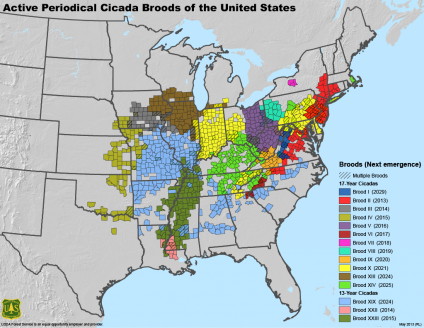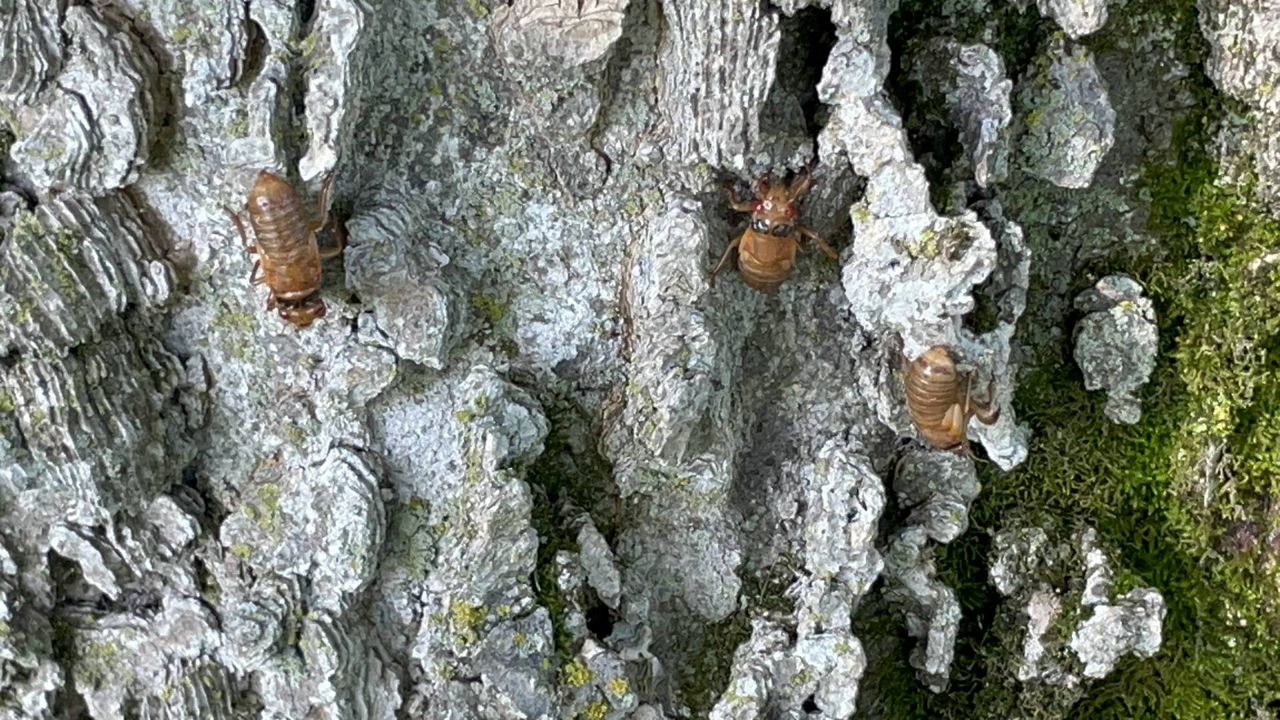ST. LOUIS — We're closer to a deafening summer in the St. Louis region as 13-year cicadas have started to surface.
The 13-year cicadas in Brood XIX are comprised of multiple species, which are considered the largest and most widely distributed population of cicadas.
In addition to Brood XIX, parts of the country will experience the annual cicadas and Brood XIII, which emerges every 17 years.
Cicadas live underground and emerge when it's mating season. Once mating season is over, females will lay their eggs in stems of trees, according to Fowler-Finn. Adults will die before the nymphs hatch.
The nymphs will then live underground for the next number of years.
“When the 13-year and 17-year cicadas come out, they come out in enormous numbers and we think about cicadas as being loud, but this is deafening,” St. Louis University associate biology professor Dr. Kasey Fowler-Finn said. “If you're near a tree with the cicadas, it's going to be really, really difficult to hear.”
Cicadas have been spotted in parts of the St. Louis region, including in the Ellisville area on Tuesday.
While the 13-year and 17-year cicadas will simultaneously emerge, Fowler-Finn said the two broods will not overlap in Missouri like in other states such as Illinois.
“The areas of overlap are going to be pretty minimal,” she said.
Missouri and the St. Louis area primarily will have the 13-year cicadas and the annual cicadas, while areas such as Springfield, Illin., will experience both of the periodical cicadas.

The 13-year cicadas are further south and the 17-year cicadas are further north, according to Fowler-Finn.
The summer of 2011 was the last time the 13-year cicadas emerged.
“They were just all over the place,” Fowler-Finn recalled.
This year, the number of cicadas will be “equally as impressive as it was in the past,” she said.
After cicadas crawl out of the ground, they grab onto surfaces such as a tree trunk, shed their excess skeleton and become an adult, according to Fowler-Finn.
“You’ll see a bunch of skins on the trees and that’s just where they turned from a baby into an adult,” she said.
Although some people may not enjoy the cicadas, they play a crucial role in balancing the ecosystem. Birds will have a feast when the cicadas come as they are a nutritious food source for them and other small mammals, according to Fowler-Finn.
“We hear a lot about this decline in birds that people have been talking about now for a while and insects provide a huge food source for birds,” she said.
Besides being a food source, cicadas create tunnels as they burrow in and out of the ground, which aerates soil and helps with tree growth, Fowler-Finn said, as well as prune tree limbs.
The male and female cicadas each have their own sound of communication. If someone is near a tree or wall with cicadas, they can snap their fingers and it will trigger the cicadas to start signaling to one another, according to Fowler-Finn.
The St. Louis area can expect the cicadas to last for two to three months.









